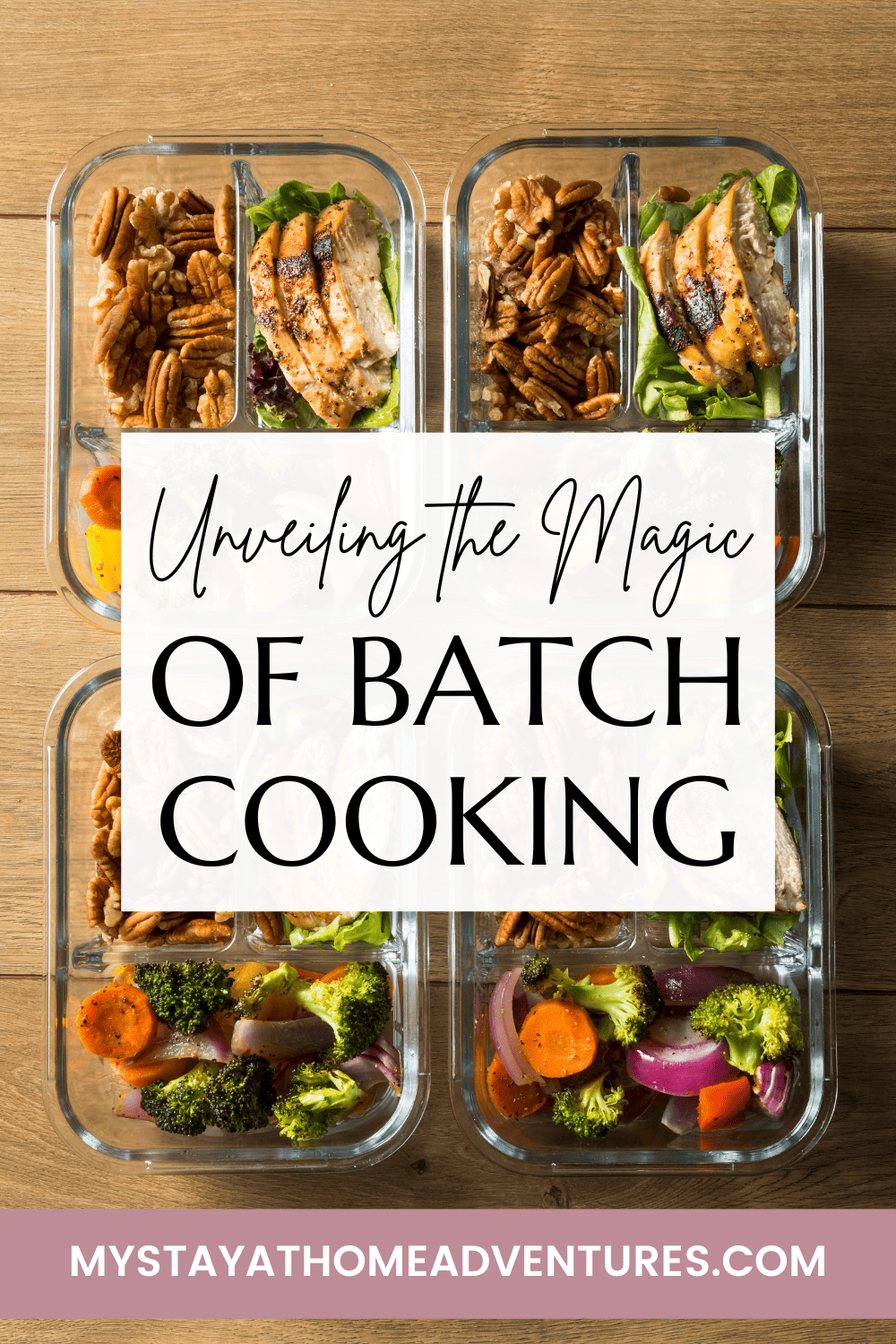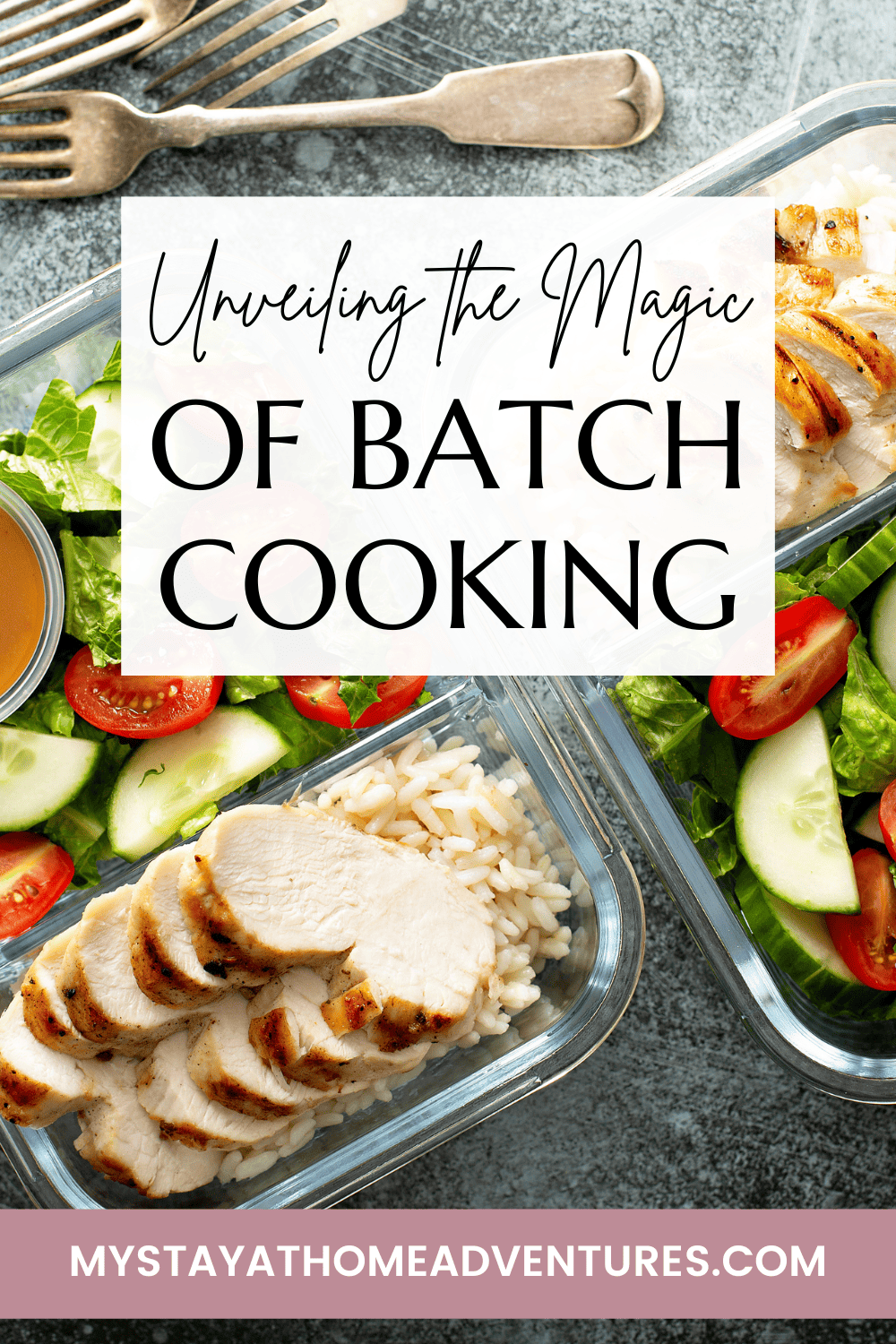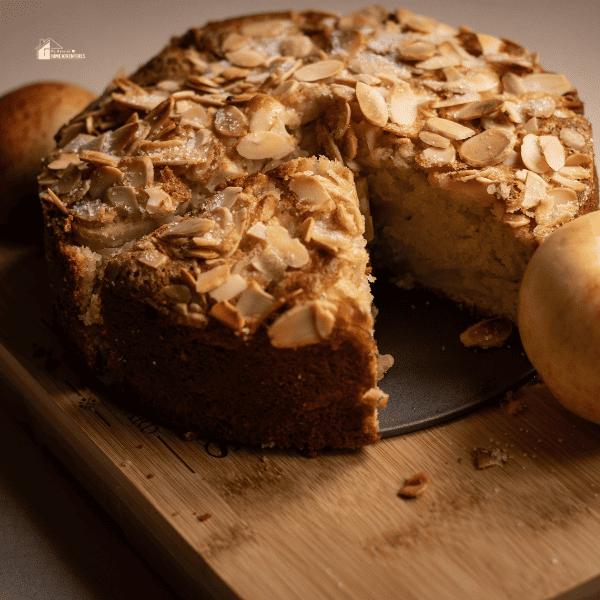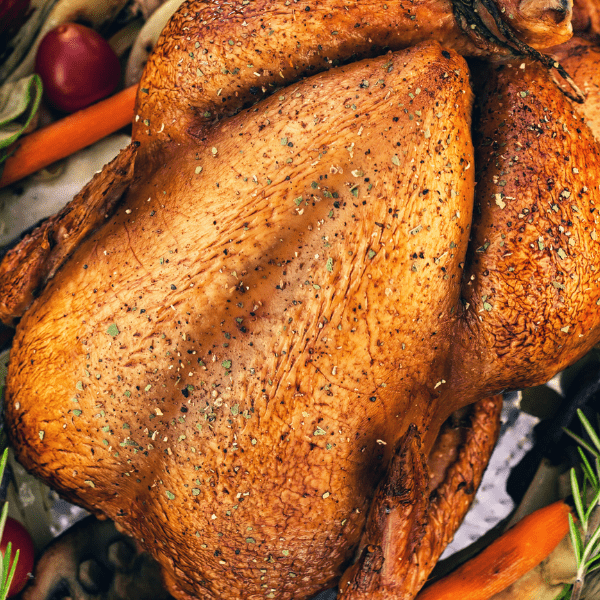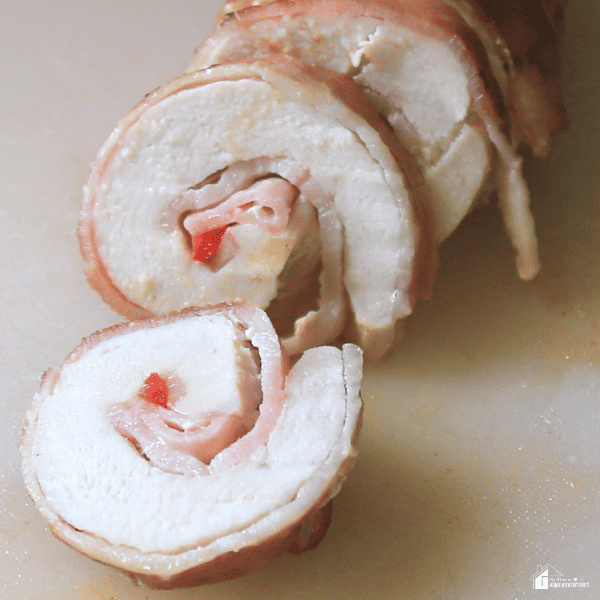What Is Batch Cooking?
This post may contain affiliate links which might earn us money. Please read my Disclosure and Privacy policies hereBatch cooking is a meal preparation method that involves cooking a large quantity of food in one go and then storing it for later use. The term “batch” refers to the process of cooking a batch or a batch of ingredients all at once.
The cooked food is then portioned into individual servings and stored in airtight containers in the refrigerator or freezer. When it's time to eat, the pre-cooked meals can be quickly reheated or combined with other ingredients to create a complete meal.
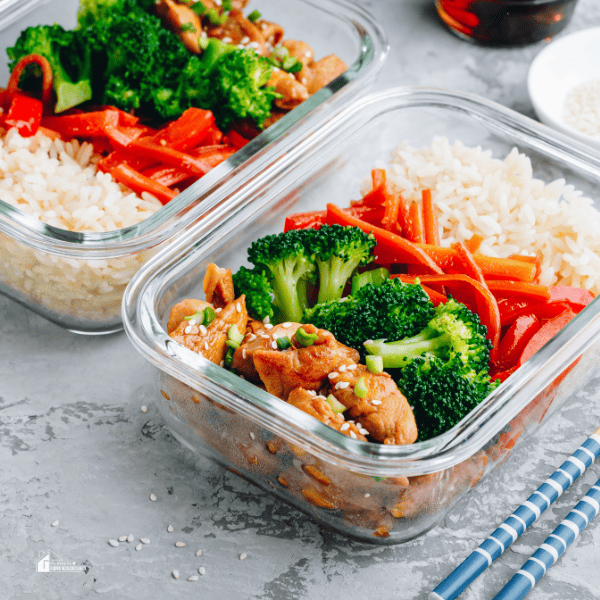
Benefits of Batch Cooking
The main purpose of batch cooking is to save time and effort in preparing meals on a daily basis. By cooking in larger quantities, you can reduce the time spent chopping, prepping, and cooking ingredients daily. Batch cooking also allows for better meal planning and portion control, as you can prepare specific servings based on your dietary needs.
One of the key benefits of batch cooking is its ability to promote healthier eating habits. With readily available pre-prepared meals, you are less likely to turn to unhealthy convenience foods or takeaways when pressed for time.
Batch cooking also gives you more control over your meals' quality and nutritional content, as you can choose fresh, whole ingredients and limit the use of processed foods.
In addition to saving time and promoting healthier eating, batch cooking can also save you money. Buying ingredients in bulk and taking advantage of supermarket deals and discounts can help reduce your grocery bills.
Batch cooking also minimizes food waste, as you can plan recipes to use up leftover ingredients from previous meals and avoid purchasing unnecessary items.
Here's a table comparing the benefits of batch cooking:
| Benefits | Batch Cooking |
|---|---|
| Time-saving | ✔ |
| Healthier meals | ✔ |
| Portion control | ✔ |
| Cost-effective | ✔ |
| Reduced food waste | ✔ |
What is Batch Cooking?
It is a time-saving method that allows individuals to have pre-cooked meals readily available, reducing the need for daily cooking and saving valuable time during busy weekdays.
The process of batch cooking generally involves the following steps:
- Planning: Choose the recipes and meals you want to prepare for the upcoming week. Consider a balance of proteins, carbohydrates, and vegetables to ensure a well-rounded diet.
- Grocery Shopping: Make a list of the ingredients needed for the selected recipes and purchase them in the appropriate quantities.
- Prepping: Preparing the ingredients by washing, chopping, and cooking them as necessary. This may include tasks such as cutting vegetables, marinating proteins, and cooking grains or pasta.
- Cooking: Cook the various components of your meals in larger quantities. This can include proteins like chicken, beef, or tofu, as well as grains, vegetables, and sauces.
- Portioning and Storing: Divide the cooked food into individual portions and store them in airtight containers or freezer-safe bags. Label and date the containers for easy identification.
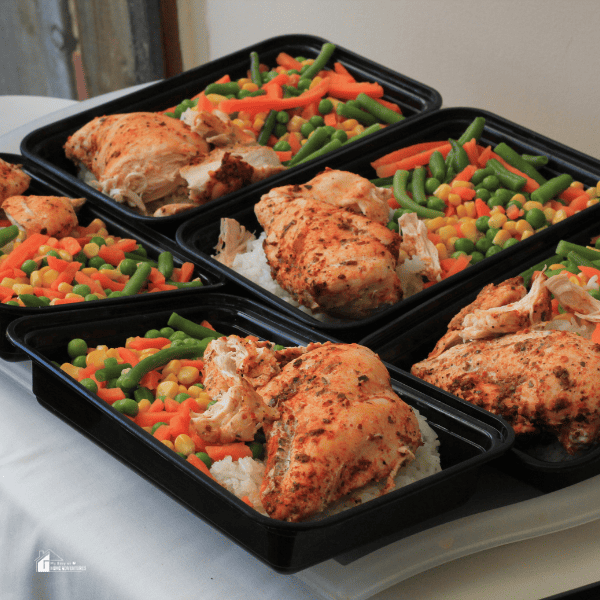
Why Batch Cooking is Gaining Popularity
Batch cooking has become increasingly popular, especially among individuals with busy lifestyles. With hectic work and home schedules, finding time to prepare nutritious meals every day can be challenging. Batch cooking provides a solution by allowing you to spend a dedicated amount of time cooking and preparing meals for the week, ensuring that you always have a healthy option available, even on the busiest days.
The rise of social media and online communities focused on healthy eating and meal preparation has also contributed to the popularity of batch cooking. These platforms effectively provide inspiration, ideas, and tips on batch cooking, making it more accessible and appealing to a wider audience.
Batch cooking also fits well with the trend toward sustainability and reducing food waste. By planning meals in advance and using ingredients efficiently, you can minimize the amount of unused food that ends up in the trash.
With a little planning and preparation, you can enjoy the benefits of having delicious, homemade meals ready to enjoy whenever you need them.
So, why not try batch cooking and see how it can simplify your meal preparation and make healthy eating more achievable?
Keep reading if you are still interested in batch cooking and want to get started.
How to Get Started with Batch Cooking
If you're new to batch cooking, here are some essential tools and tips to help you get started.
Essential Tools and Equipment
To successfully batch cook, you'll need a few key tools and equipment:
- Large Pans: Make sure you have pans that are big enough to accommodate the quantity of food you'll be preparing. It's helpful to have a variety of sizes to cater to different recipes.
- Sharp Knife and Cutting Board: Invest in a good-quality knife and cutting board to make the preparation process easier and more efficient.
- Freezer-Friendly Containers: Choose containers that are suitable for freezing your meals. Opt for reusable plastic or glass containers that come in different sizes, allowing you to portion your meals accordingly.
- Labels: It's essential to label your frozen meals with the recipe, date, and number of portions. This will help you keep track of what's in your freezer and ensure you use everything before it expires.
Tips for Planning and Organizing
To make batch cooking a breeze, here are some helpful tips for planning and organizing your meals:
- Plan Ahead: Take a look at your schedule for the upcoming week and decide which meals you want to batch cook. Make a shopping list and gather all the ingredients you'll need before you start cooking.
- Cook in Bulk: Instead of spending a whole afternoon preparing a month's worth of meals, consider cooking a large batch of one meal and freezing it. This way, you can build up a stock of dinners without spending too much time in the kitchen.
- Utilize Freezer Space: Before you begin batch cooking, make sure you have enough space in your freezer to store your meals. Clear out any expired or unlabeled items and organize your freezer space using baskets or dividers. This will make it easier to find and access your frozen meals.
- Cool Meals Completely: Allow your cooked meals to cool completely before portioning and freezing. This will help maintain the quality and taste of the food.
- Keep a Variety: Batch cooking doesn't mean you have to eat the same meal every day. Aim for variety by batch cooking different dishes and mixing and matching ingredients throughout the week. This will prevent meal fatigue and keep your taste buds satisfied.
By following these tips and utilizing the right tools, you can successfully incorporate batch cooking into your routine. With a bit of planning and organization, you'll have a freezer stocked with delicious and healthy meals that are ready to enjoy whenever you need them.
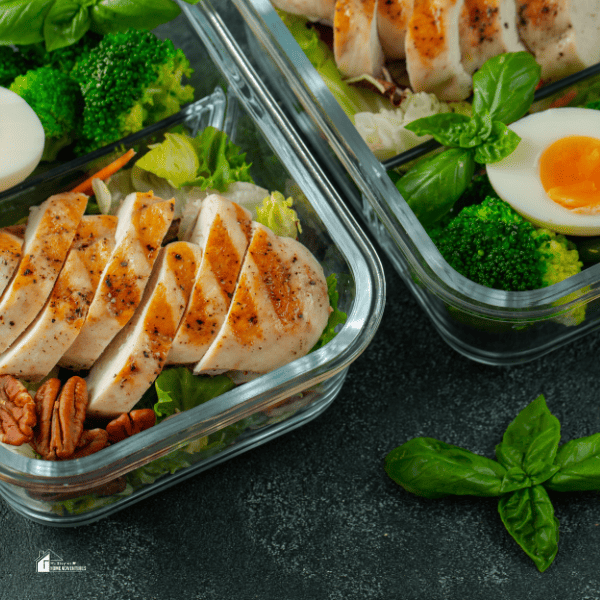
Tips for Freezing and Storing Batch Cooked Meals
The idea is to have ready-made meals that can be quickly reheated, saving time and effort on busy days. But how do you freeze and store these batch-cooked meals to maximize freshness and minimize waste? Here are some tips:
Proper Containers and Packaging
The choice of containers and packaging is crucial when it comes to freezing and storing batch-cooked meals. Here are some options to consider:
1. Reusable Containers: Invest in reusable containers that are freezer-friendly and can withstand the low temperatures without cracking or breaking. Glass and BPA-free plastic containers are popular choices. These containers not only help store the meals but are also environmentally friendly.
2. Freezer Bags: Freezer bags are excellent for storing soups, stews, and other liquid-based dishes. Make sure to use high-quality bags that are durable and have a secure seal to prevent any leaks.
3. Aluminum Foil and Freezer Paper: For dishes that need to be wrapped individually, such as burritos or sandwiches, aluminum foil or freezer paper can be used. These materials provide a protective layer and help prevent freezer burn.
4. Vacuum Sealer: Consider investing in a vacuum sealer, which removes air from the packaging before sealing it. This method helps preserve the food's flavors and textures, extending its shelf life.
Labeling and Organizing in the Freezer
Proper labeling and organization are essential for easy retrieval and minimizing food waste. Here's what you can do:
1. Label the Containers: Clearly label each container with the name of the dish and the date it was prepared. Include reheating instructions if necessary.
2. Use a Sharpie or Masking Tape: Write directly on the container or use masking tape to label freezer bags or aluminum foil-wrapped meals.
3. First-In-First-Out (FIFO) System: Arrange the containers in the freezer using the FIFO system. Place the newest meals at the back and the older ones in the front. This ensures that you use the older meals first and minimizes the risk of forgetting about them.
4. Freeze Meals in Portions: Dividing the meals into individual or family-sized portions before freezing makes it easier to thaw and reheat only the amount you need.
5. Keep an Inventory: Keep track of the meals you have in the freezer by maintaining an inventory list. This helps you plan your meals and prevents unnecessary duplication.
Proper freezing and storage techniques will help maintain your batch-cooked meals' quality, taste, and nutritional value.
Using the right containers, proper labeling, and organizing techniques ensures that your batch-cooked meals stay fresh and flavorful until you're ready to enjoy them.
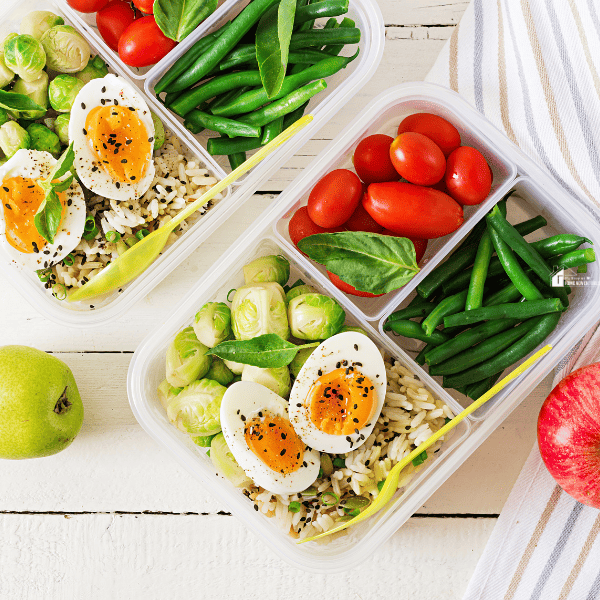
Base Recipes for Batch Cooking
When it comes to batch cooking, having versatile base recipes can be a game-changer. These base recipes serve as a foundation for various dishes and can be easily adapted to create different meals throughout the week. Here are some examples of versatile base recipes that are perfect for batch cooking:
Versatile Base Recipes that can be Adapted into Different Dishes
- Tomato Sauce: A classic tomato sauce can be used in pasta dishes, casseroles, and even as a base for pizza. Prepare a large batch of tomato sauce and portion it out for various meals.
- Bolognese Sauce: Bolognese sauce made with minced beef and vegetables is extremely versatile. Use it as a pasta sauce one day, and transform it into lasagna or stuffed peppers the next.
- Soup: Soup is an excellent base recipe for batch cooking. Start with a simple base of carrots, onions, and celery, and add any other vegetables you like. Portion it out and freeze it for future quick and easy meals.
Step-by-Step Guide on Preparing Base Recipes
Here's a step-by-step guide on how to prepare base recipes for batch cooking:
- Decide on the base recipe you want to make. Gather all the necessary ingredients, whether it's tomato sauce, Bolognese sauce, or soup.
- Prepare and chop all the vegetables according to the recipe. This step will save you time when you're ready to cook.
- Cook the base recipe, following the instructions. Allow it to cool before portioning it out.
- Divide the base recipe into individual portions using airtight containers. Label each container with the name of the recipe and the date it was prepared.
- Store the containers in the fridge or freezer, depending on how soon you plan to use them. Base recipes like tomato sauce and Bolognese sauce can be refrigerated for a few days and frozen for up to a month.
When you're ready to create different dishes from your base recipes, defrost or thaw the desired portion and incorporate it into your meal. You can get creative and add different ingredients or seasonings to customize each dish.
Batch cooking with versatile base recipes saves you time and effort during the week and allows you to enjoy a variety of homemade meals without the hassle of starting from scratch every time.
With these base recipes and helpful tips, you'll be well-equipped to embark on your batch-cooking journey and enjoy the benefits of readily available delicious and nutritious meals.
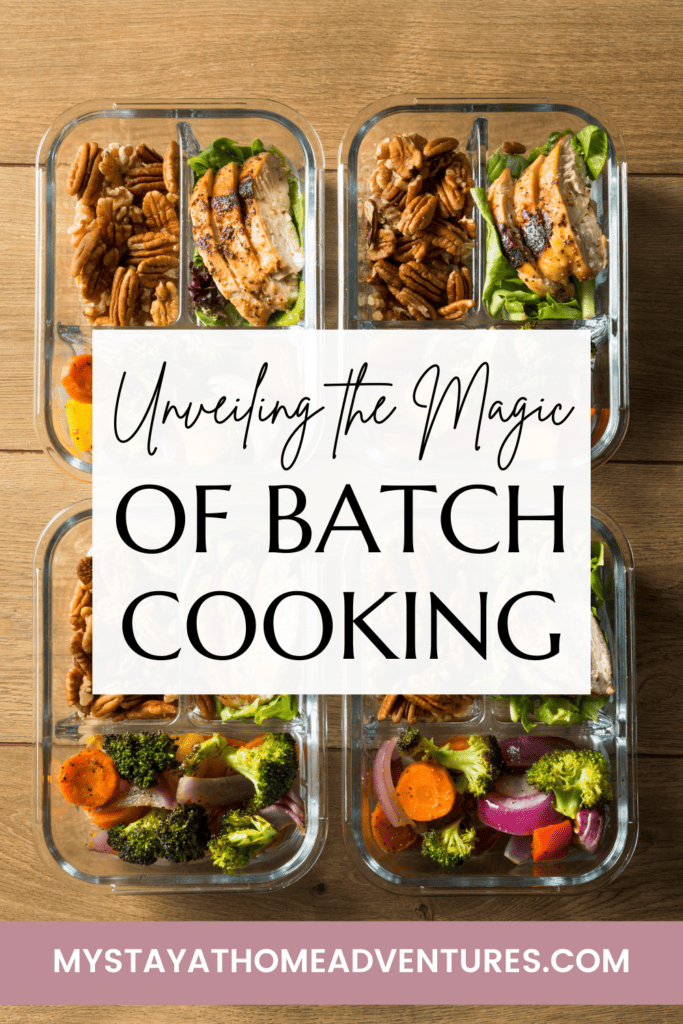
Benefits of Batch Cooking for Time, Money, and Health
Batch cooking offers several benefits that make it a popular choice for individuals looking to save time, and money, and improve their health:
- Time-Saving: Batch cooking allows you to dedicate a specific time to cooking, often on weekends, which frees up time during the week. With pre-prepared meals, you can quickly heat and assemble your meals, eliminating the need for daily cooking and reducing kitchen time.
- Money-Saving: Buying ingredients in bulk and utilizing leftovers in future meals also lowers overall grocery expenses.
- Healthier Eating: With batch cooking, you have control over the ingredients used, allowing you to prioritize healthier options.
- Portion Control: By portioning meals in advance, you can ensure that each meal contains an appropriate serving size. This promotes mindful eating and helps maintain a healthy balance in your diet.
- Variety and Convenience: Batch cooking allows you to incorporate a variety of dishes into your meal plan, making it easier to enjoy different flavors and cuisines throughout the week. Having pre-made meals readily available saves time and eliminates the stress of deciding what to cook each day.
Putting Batch Cooking into Practice
To effectively implement batch cooking into your routine, consider the following tips:
- Plan your meals: Decide on the recipes and meals you want to prepare for the week ahead. Consider a mix of proteins, vegetables, and grains to create a balanced diet.
- Make a grocery list: Based on your meal plan, create a shopping list of the ingredients you need. Purchase items in larger quantities whenever possible to save money.
- Dedicate a cooking day: Set aside a specific day or time to focus on batch cooking. This allows you to prepare multiple meals at once and saves time during the week.
- Cook in bulk: Prepare larger quantities of proteins, grains, and vegetables. Cooked food can be portioned into individual servings and stored in the refrigerator or freezer.
- Store properly: Use airtight containers or freezer-safe bags to store your batch-cooked meals. Label and date the containers for easy identification.
By following these steps, you can successfully incorporate batch cooking into your routine, saving time and ensuring healthy, homemade meals are readily available. With practice, you'll find the approach that works best for you and enjoy the many benefits of this efficient meal preparation method.
Whether you are a busy professional, a student, or a parent, batch cooking offers numerous benefits and can greatly simplify your life. Start incorporating batch cooking into your routine and experience the time-saving and health benefits it provides.

